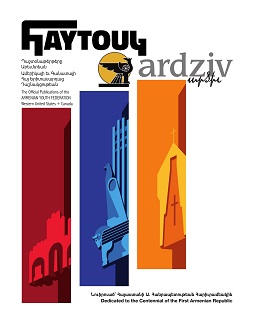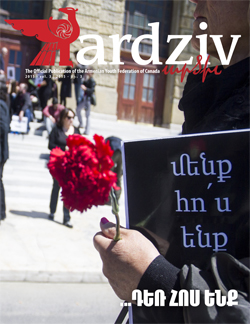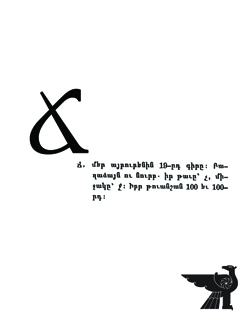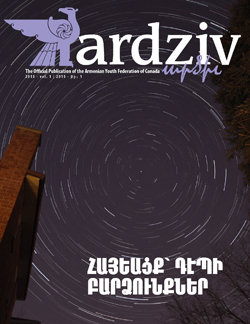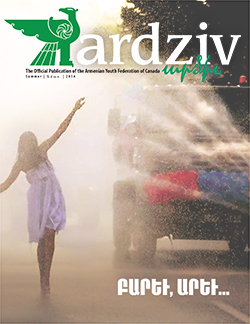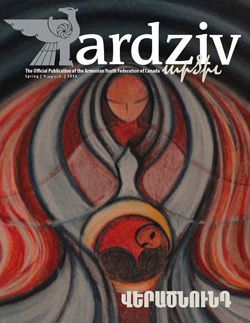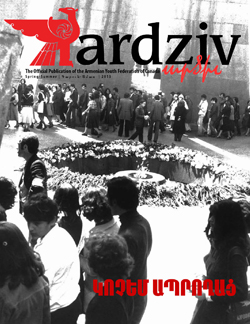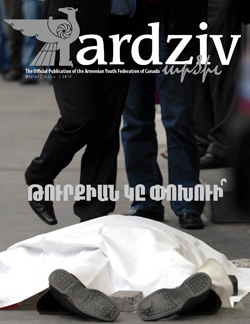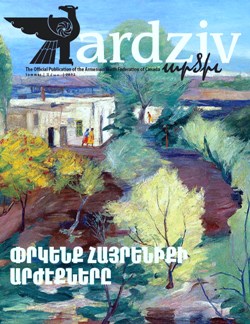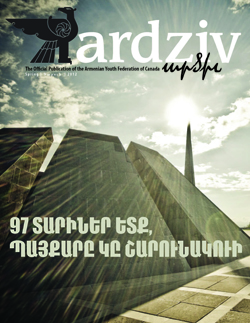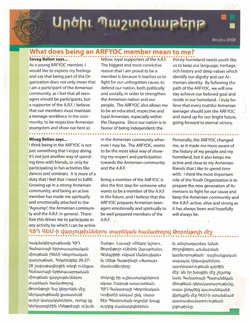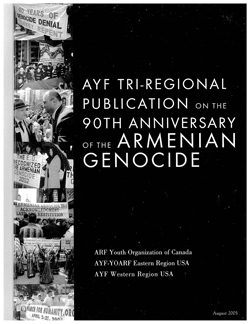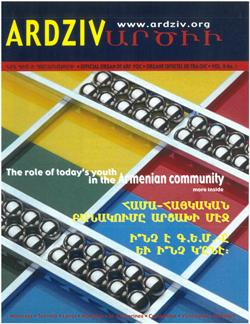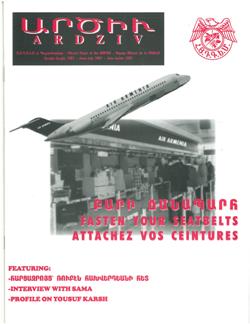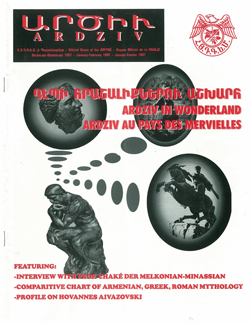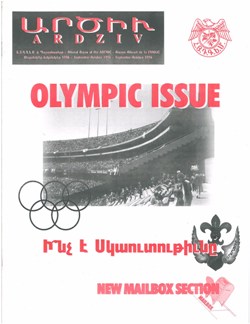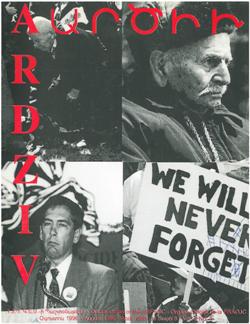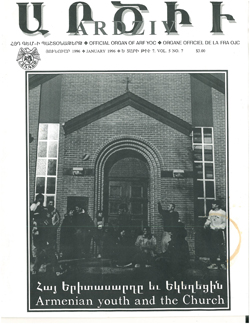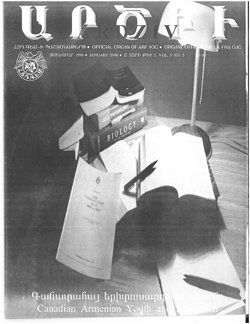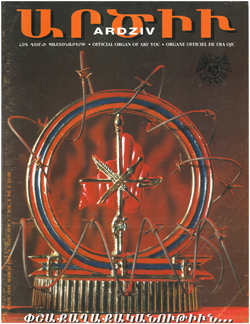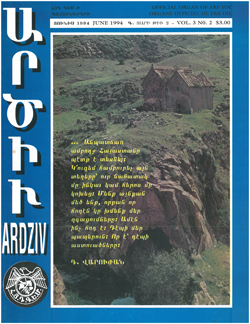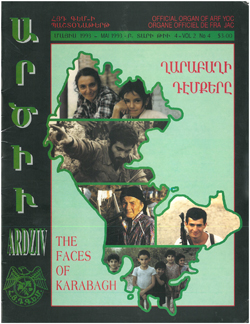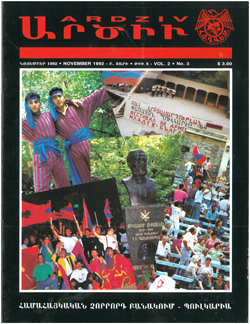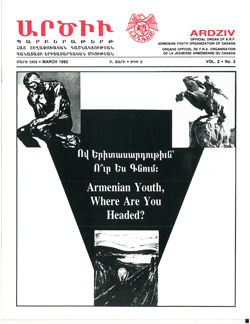Preserving our Culture One Song at a Time: Music as an Agent of Cultural Pride in the Diaspora
By: Katya DerHovagimian | Posted on: 22.02.2013Warning: Undefined array key "ssba_bar_buttons" in /home/u108981792/domains/ardziv.org/public_html/wp-content/plugins/simple-share-buttons-adder/php/class-buttons.php on line 602
Warning: Undefined array key "ssba_bar_buttons" in /home/u108981792/domains/ardziv.org/public_html/wp-content/plugins/simple-share-buttons-adder/php/class-buttons.php on line 602
Warning: Undefined array key "ssba_bar_buttons" in /home/u108981792/domains/ardziv.org/public_html/wp-content/plugins/simple-share-buttons-adder/php/class-buttons.php on line 602
Warning: Undefined array key "ssba_bar_buttons" in /home/u108981792/domains/ardziv.org/public_html/wp-content/plugins/simple-share-buttons-adder/php/class-buttons.php on line 602
Among a slippery slope of subject matter, the future of the Armenian community in the diaspora stands as a serious concern. As our world becomes more and more enveloped in its foreign grounds, there is fear that our cultural fervour will simmer down to idleness in the near future.
The future is as clear as mud, but the present state offers some consolation—at least when it comes to our taste in music. In past issues of Ardziv, much has been rightly discussed about the music scene in Armenia and Armenia’s musical place on an international scale. However, not much has been said about its quality as an agent of cultural preservation. It is clear that our generation has acquired a palate for Armenian music; not only the pieces of the past, but what is current and popular today.
On my camping trip to Armenia, in the summer of 2006, I met a young man who voiced his aspirations of becoming a revolutionary singer. Even as a teenager, Kristapor Arabian had a grandiose dream that he was steadfast in making happen. Growing up in the diaspora, what prompted Arabian to pursue such aspirations came two-fold. He was inspired by the stories of heroism of our freedom fighters, which he had heard as a child, and how the songs about them kept their memory alive. He also realized that these songs were not as popular among the younger generation and that perhaps a younger voice would connect the youth better.
What seemed like a distant fantasy six years ago is a sharp reality today. On the occasion of the 122nd Anniversary of the Armenian Revolutionary Federation, as Kristapor Arabian took the stage, a man approached me and said, “Armenian revolutionary music has a strong future because of this man.” The juxtaposition of the dream that lives in the near past and the present state proves that not only are we distant from cultural idleness, but we have the potential to thrive in the future.
Our generation has found a voice through the social aspect of music as well. One band that comes to mind is Pyunik. Having grown up with a few of its members, I have been a spectator to their musical evolution; from their humble elementary school days singing in the choir,to who they have become today. I have watched them extend their wings to debuting their first single, writing songs for other performers, and even going solo on a drum set. The immense talent of this group is astonishing. For lead singer SevagTitizian, there is something personal about being able to get on stage to sing in Armenian. “Music is beautiful in every language, but it is extremely exquisite when it is presented in your mother tongue.” He says that at the end of the day, his pride in being Armenian and his dedication to his culture is what has called him to sing in Armenian.
What’s most intriguing in our society today is our willingness and appetite to consume as much of this music as we can. The overwhelming number of youth that are present at events where any young singer might perform is astonishing.
Perhaps it’s a coincidence or an unidentified correlation, but there seems to be parallels between the Armenian Youth Federation (AYF) and the desire to pay it forward through music.From Kristapor Arabian to Pyunik, to Yerakouyn, Artsakh, and Aravod; all of these bands are comprised of musicians who are deeply rooted in the AYF as either current or alumni members.
According to our youthful performers, the future of our communities seems to be prospering from the eyes of the stage. Titizian argues that it is our duty as Armenians to share and spread our culture, young and old. He says, “The future only exists if you work on it in the present. So let’s work on it! That being said, I think the future of Armenian music is very bright because there are so many different styles and genres. There is something for everyone. We Armenians are a very talented people and I think we still haven’t even left our mark on the world. I can’t wait to see what the future holds for us!”Arabian also believes that we are on the right track and that music is making its way back to people’s hearts.He argues that it is our job as today’s generation to do all we can to keep these songs alive and teach the youth about them. He says that “it is very important to stay connected to Armenian culture and learn our history, because without all that, we are nothing. The richness of Armenian history is what inspired me to pursue my dreams and I’m one hundred percent sure it can do the same for them. The youth is the future.”
As we head into this new year, let us make a resolution to defy the odds. Let’s hold on to our culture, at least through its multiple genres of music and as the youth, let us continue introducing the community to new music in the market today.









